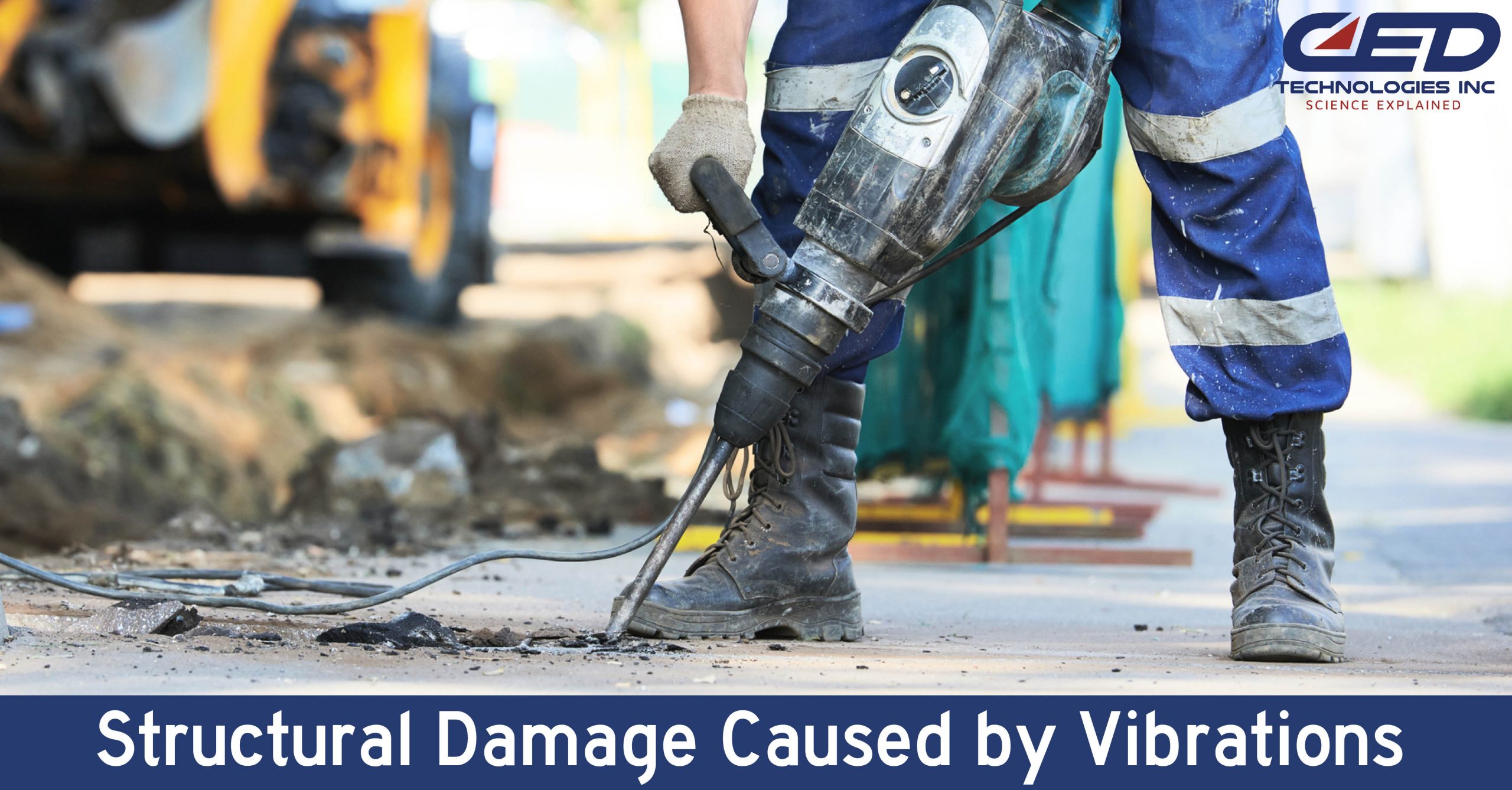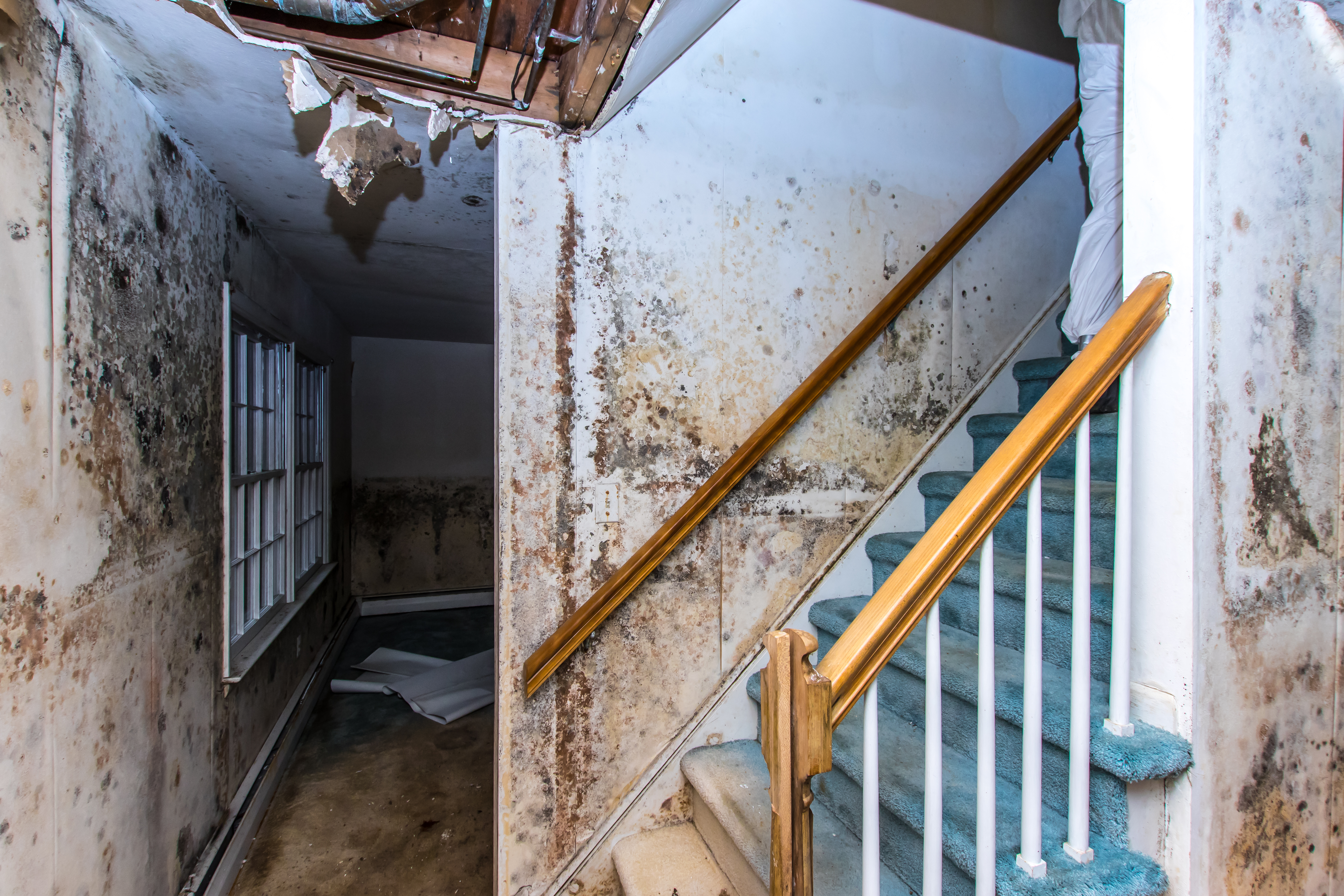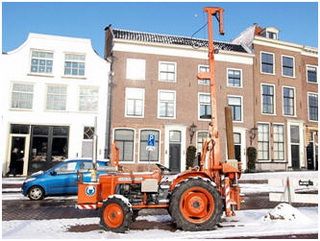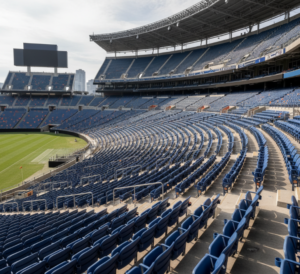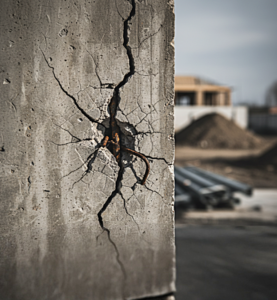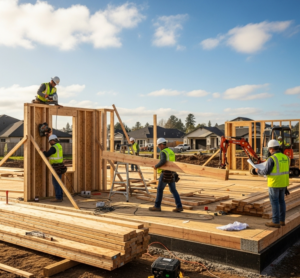
Vibrations Can Cause Structural Damage
On the Scene E-Newsletter, Edition 139, June 8, 2011
 Most people are familiar with natural causes attributed to foundation cracking such as earthquakes, wind, poor soil conditions, freezing and thawing cycles, tree roots, and moisture in the soil. Although vibrations caused by natural causes endanger structures, vibrations caused by man-made efforts may be troublesome as well. Common construction activities such as large equipment traffic, drilling, blasting and soil compaction produce ground vibrations which conceivably damage nearby buildings or homes.
Most people are familiar with natural causes attributed to foundation cracking such as earthquakes, wind, poor soil conditions, freezing and thawing cycles, tree roots, and moisture in the soil. Although vibrations caused by natural causes endanger structures, vibrations caused by man-made efforts may be troublesome as well. Common construction activities such as large equipment traffic, drilling, blasting and soil compaction produce ground vibrations which conceivably damage nearby buildings or homes.
Demolition and new foundation work are common sources of vibrations that can cause an area effect. The tools and methods used in demolition and construction, such as pile drivers, jack hammers, wrecking balls, pavement breakers and rock blasting produce vibrations that may be transmitted to and can result in claims involving:
• exterior cracking of façades
• interior cracking of walls
• roof collapse / structural failure
• pavement & foundation cracking
The underlying issues are often:
• differences in materials where they join
• insufficient or defective materials
• inadequate water management techniques used for drainage or rainwater
• settling of soil
• voids existing within grading of soil
• fasteners may become loose with excessive vibration
• inadequate maintenance
• insect invasion
What can be done to verify how the damage occurred? First, an engineer will examine and evaluate damages to the structure and second, they will evaluate the construction activities. This is accomplished by determining the following:
• if any vibration imparted to the soils, violate the “Peak Particle Velocity” guidelines
• seismograph readings (often taken during time of work/construction)
• whether adjoining structures were evaluated or photographed to measure potential shifts, cracks, settling or uplifting to them
• was the water table evaluated in cases where dewatering would be a necessary construction technique
• evaluate and/or analyze the following:
• type of construction or equipment being utilized
• proximity of damage to location of work being completed
• was blasting close and how large were the explosives
• see/ask if items fell off shelves
• documentation provided by those undertaking the construction
• what are weights of the machinery and vehicles traversing the site
• age of the cracks
• sharpness of the crack edges
• growth of the cracks
• older paint present
• other witness marks
• look for other potential causes of the cracking such as a water leak, blunt force, etc.
As you can see by the above list, evaluating structural damage is not a simple process. CED engineers’ training and experience allows them to uncover the extent and cause of structural damages–whether the cause turns out to be nearby construction, storms, or defective materials or techniques. Our engineers understand the methods of vibration measurement and analysis and follow established procedures during testing. Therefore, should you require assistance in structural damage assessment due to suspected vibration, call us at (800) 780-4221 or please visit our website at www.cedtechnologies.com.

